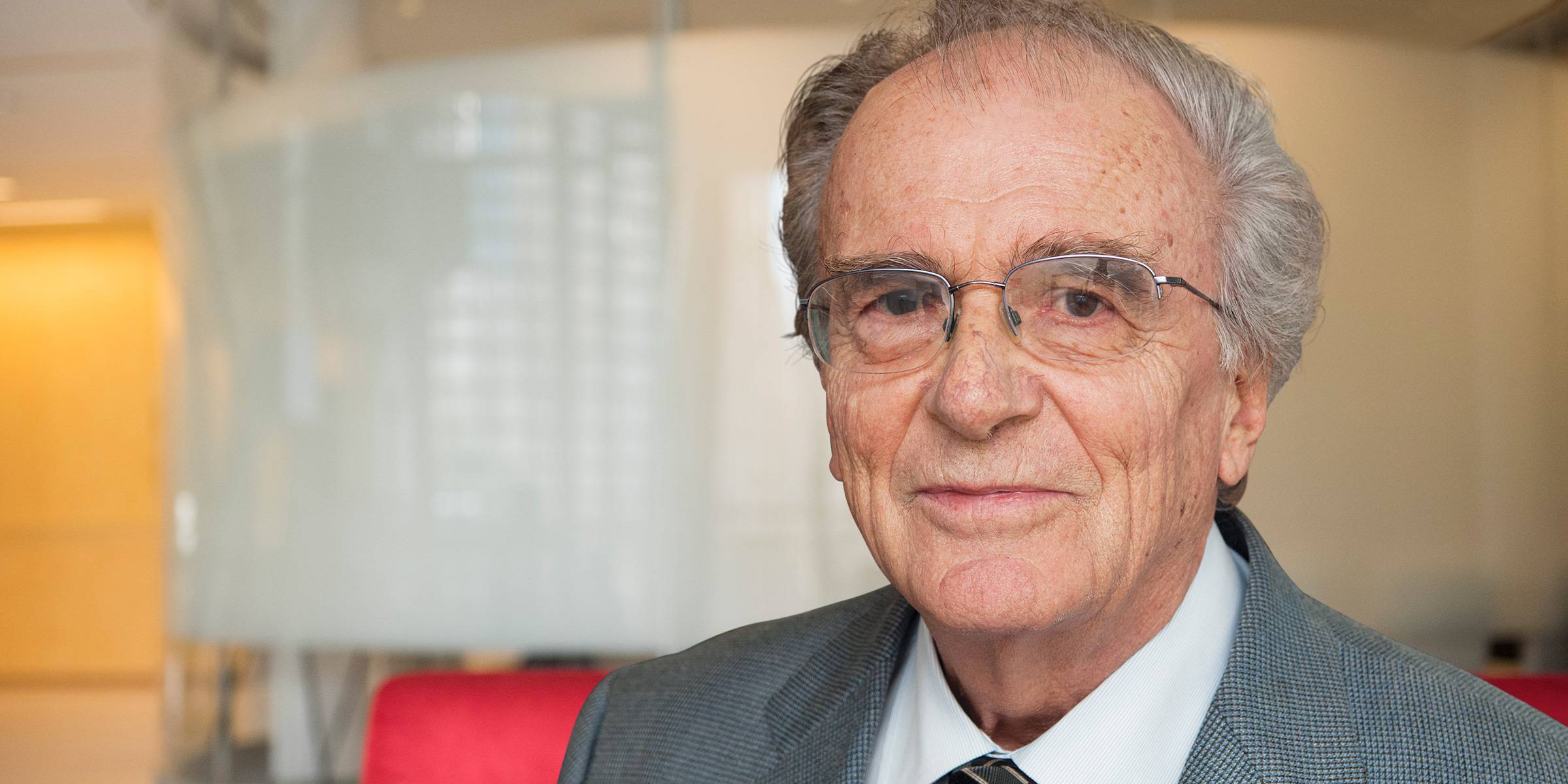Alexander Tomasz, Ph.D.
Dr. Plutarch Papamarkou Professor Emeritus
The cell walls of pathogenic bacteria are the site of molecular events responsible for many symptoms of bacterial disease, as well as the target for antibiotics. Focusing on Streptococcus pneumoniae and Staphylococcus aureus, Tomasz studies how bacteria cause disease and resist antibiotics, often through mechanisms involving their cell walls.
The lab discovered that pneumococci secrete a polypeptide that allows foreign DNA to pass through cell walls. This finding has been cited as the first evidence that bacteria “talk” to one another, a concept later called quorum sensing. The Tomasz lab also discovered a mechanism named antibiotic tolerance, which enables bacterial cells to evade the programmed cell death triggered by antibiotics.
Building off this work, the Tomasz lab was the first to demonstrate that penicillin resistance in S. pneumoniae involves the reengineering of penicillin-binding proteins (PBPs) using blocks of foreign DNA that reduce PBPs’ affinity for the antibiotic. Pneumococci with the reengineered PBPs are not only resistant to penicillin, but show an altered chemical structure of their cell walls.
Other projects in the Tomasz lab have focused on the role of the cell wall in bacterial virulence and antibiotic resistance. His research led to the identification of specific mutations that accompanied the evolution of antibiotic resistance in an S. aureus strain from a patient undergoing extensive chemotherapy by vancomycin. The lab is also tracking the spread of antibiotic-resistant clones of staphylococci and pneumococci, often in collaboration with labs in Europe and South America.
Tomasz received his Ph.D. in biochemistry from Columbia University in 1963. He came to Rockefeller as a postdoc in 1963. He became assistant professor in 1964, associate professor in 1967, professor in 1973, and professor emeritus in 2019. In 1982 Tomasz was a recipient of the Hoechst-Roussel Award of the American Society for Microbiology, and he received the Selman A. Waksman Award in 1987.
